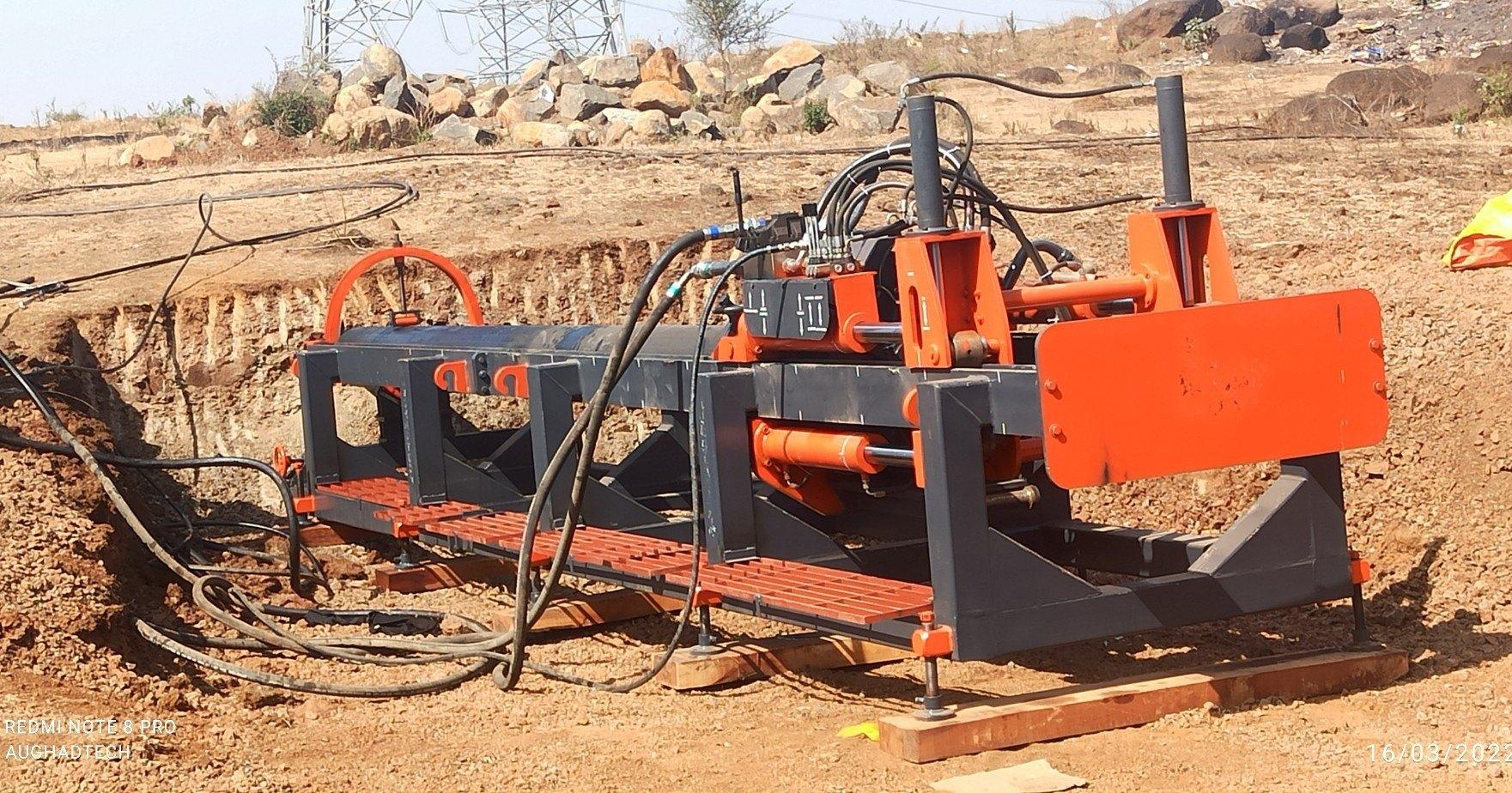In construction and utility projects, underground drilling is very important. It allows engineers to install pipelines, cables, and other structures without disturbing the surface too much. Two of the most common methods used for underground drilling are the horizontal auger boring machine and HDD (Horizontal Directional Drilling).
Both methods help in laying pipelines and conduits under roads, railways, and other obstacles. However, they are not the same. Each method has its own features, benefits, and limitations. To choose the right method, engineers must understand the differences clearly.
This article will explain the key differences between a horizontal auger boring machine and HDD in simple and clear language.
What Is a Horizontal Auger Boring Machine
A horizontal auger boring machine is a type of trenchless technology used to install pipelines under roads, railways, and other obstacles. It works by pushing a steel casing pipe into the ground while removing soil with a rotating auger. The auger carries the soil back to the entry pit, leaving the casing pipe in place.
This method is widely used for straight, level bores in soil where accuracy is important. The horizontal auger boring machine is best suited for short to medium distances and for larger-diameter pipes.
Key features of a horizontal auger boring machine:
-
Works in a straight line only
-
Best for stable soil conditions
-
Good for installing steel casing pipes
-
Suitable for short to medium bores
What Is HDD (Horizontal Directional Drilling)
Horizontal Directional Drilling, or HDD, is another trenchless technology method. Instead of pushing a casing pipe with an auger, HDD uses a drilling rig with a steerable drill head. The drill head is guided through the ground using tracking systems. Once the drill path is made, a reamer enlarges the hole, and finally, the pipeline is pulled back through the drilled hole.
HDD is more flexible than a horizontal auger boring machine because it can create curved paths and avoid obstacles underground. It is commonly used for installing pipelines under rivers, highways, or other areas where straight boring is not possible.
Key features of HDD:
-
Can drill curved or angled paths
-
Works in many soil types, including soft and unstable soils
-
Ideal for longer distances
-
Often used for utility pipelines and cables
Key Differences Between Horizontal Auger Boring Machine and HDD
Now let us compare both methods side by side to understand their key differences.
1. Direction and Path of Drilling
-
Horizontal Auger Boring Machine: Works in a straight line only. It cannot be steered once the drilling begins.
-
HDD: Can be guided in different directions, including curves and angles. This makes it more flexible.
2. Soil Conditions
-
Horizontal Auger Boring Machine: Works best in stable and firm soil, such as clay or sandy soils. It is not suitable for very soft or rocky conditions.
-
HDD: Can handle a wider range of soils, including soft, mixed, and rocky conditions.
3. Distance and Length of Bore
-
Horizontal Auger Boring Machine: Generally used for short to medium bores. Ideal for projects up to a few hundred feet.
-
HDD: Can be used for longer bores, sometimes thousands of feet long.
4. Accuracy and Control
-
Horizontal Auger Boring Machine: Provides accurate results in a straight line but has no steering ability.
-
HDD: Provides high accuracy with steerable drill heads and tracking systems.
5. Pipe Size and Diameter
-
Horizontal Auger Boring Machine: Very effective for large-diameter casing pipes, often used for utility crossings under roads and railways.
-
HDD: Commonly used for smaller to medium-diameter pipes, cables, and conduits.
6. Cost and Setup
-
Horizontal Auger Boring Machine: Setup is simple and cost-effective for straight bores.
-
HDD: Requires advanced equipment and skilled operators, often making it more expensive.
7. Typical Applications
-
Horizontal Auger Boring Machine: Road crossings, railway crossings, and projects where straight pipes are needed.
-
HDD: River crossings, long utility installations, and projects that require curved paths.
When to Use a Horizontal Auger Boring Machine
The horizontal auger boring machine is the right choice when:
-
The project requires straight-line boring under a road or railway.
-
The soil is stable and not too rocky.
-
Large-diameter steel casing pipes need to be installed.
-
The bore length is short to medium.
-
Cost efficiency is a priority.
When to Use HDD
HDD is the better choice when:
-
The project requires curved or angled drilling.
-
The soil conditions are mixed, unstable, or rocky.
-
Long-distance pipelines need to be installed.
-
The bore must pass under rivers, lakes, or wide obstacles.
-
A high level of accuracy and control is required.
Advantages of Horizontal Auger Boring Machine
-
Strong and reliable for straight-line boring
-
Ideal for large-diameter casing pipes
-
Cost-effective compared to HDD
-
Simple setup and operation
-
Widely used for road and railway crossings
Advantages of HDD
-
Can drill in curved and angled paths
-
Suitable for longer distances
-
Works in many different soil types
-
Reduces surface disturbance even in sensitive areas
-
Provides higher flexibility and accuracy
Choosing Between Horizontal Auger Boring Machine and HDD
The choice between a horizontal auger boring machine and HDD depends on the project’s needs. If the project is short, straight, and requires large-diameter pipes, then the horizontal auger boring machine is the best choice. On the other hand, if the project needs a long, curved, or complex bore under rivers or highways, HDD will be more suitable.
By understanding the key differences, engineers can save both time and money while ensuring the success of underground construction projects.
Conclusion
Both the horizontal auger boring machine and HDD are important methods in trenchless technology. While the horizontal auger boring machine is strong, reliable, and cost-effective for straight bores, HDD provides more flexibility for curved and longer bores. Each method has its own strengths, and the right choice depends on soil type, project length, and the type of installation required.

